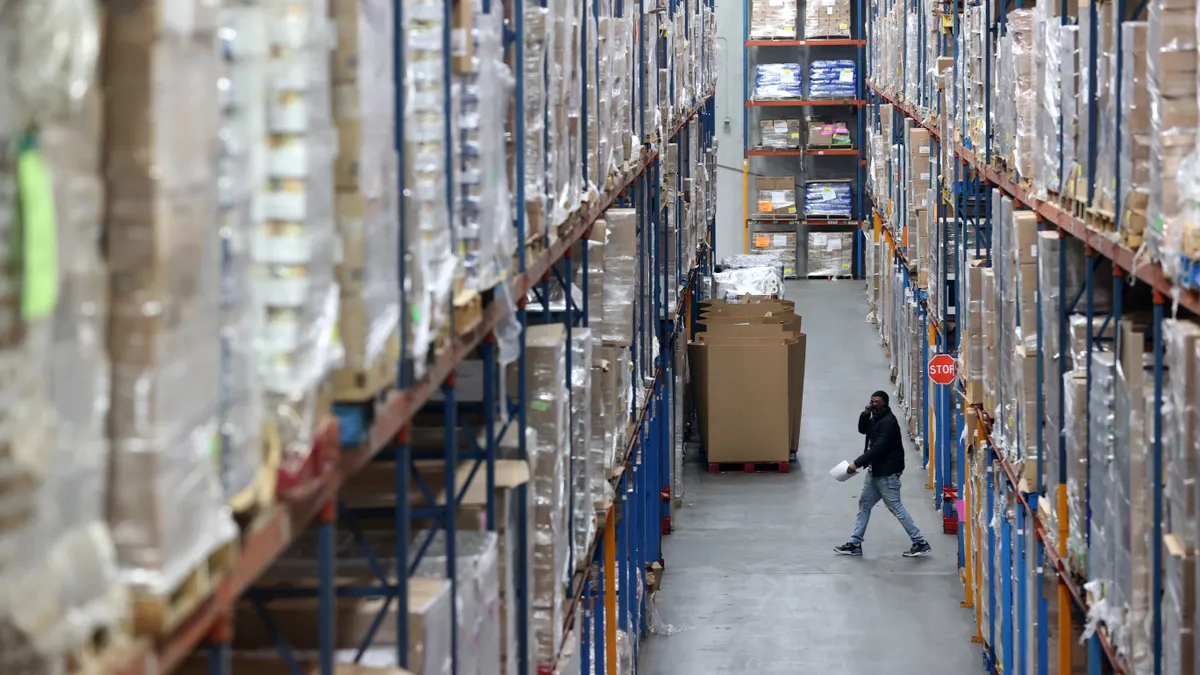Retailers, facing a particularly low inventory to sales ratio, are building up stock and replenishing stores as they aim to match supply with demand. Still, the total ratio fell to an all-time low in April of 1.25, as high sales met relatively flat demand, according to the latest figures from the Census Bureau.
Overall, sales were up 40% YoY in April while inventories were up 1% YoY. Retailers have a particularly low inventory to sales ratio of 1.07. Overall, retail has seen its inventory shrink 5% YoY as it tries to keep up with sales that are up 48% YoY, the Census figures show.
But digging into the numbers shows not all retailers experience the same issues in the current market, according to Jason Miller, an associate professor of logistics at Michigan State University.
"There's just seemingly no inventory," Miller said of the overall retail inventory figure. "But doesn't make much sense if you think about the record volume of imports we've seen through the start of this year and just how much sales we're seeing in the other sectors."
The case of the disappearing inventory can be solved if you take out auto dealerships, which the Census lists as retailers.
Dealerships affect overall inventory trend
Without dealer inventories, it becomes clear that other retailers have actually managed to build inventories above their pre-pandemic levels.
And this makes sense considering the way many retailers have spoken about inventory in recent months.
"Inventory increased 16% reflecting strong sales growth and lapping last year's COVID-related effects on inventory," Walmart CFO Brett Biggs said on the company's May earnings call.
Retailers are working to build inventories not just in the face of high demand, but also in the midst of tight capacity across the global supply chain, which makes it hard to move products quickly. But companies have been extending lead times to help improve inventory planning ahead of the back-to-school and holiday season.
"The biggest way we've handled supply chain delays is adjusted ordering and front-loading ... orders of many items," Costco CFO Richard Galanti said last month. "And we think we've got that pretty well under control."
Meanwhile, Ford told analysts about "tight dealer inventories" on its earnings call at the end of April. Automakers have been dealing with a shortage of semiconductors that is affecting suppliers, limiting car production levels and holding back dealer-level inventories.
"In normal times, [the motor vehicle and parts dealers] sector accounts for roughly 36% of all retail inventories," Miller said. "So it has a really outsized role in shaping that headline figure."
Despite inventory recovery, higher sales drag down ratio
Retail sales excluding motor vehicle dealers surged more than 43% YoY in April — this is compared against the lowest point in the pandemic-induced trough — and nearly 19% compared to the same month in 2019. But April inventories excluding motor vehicle dealers showed growth of just 4% over 2019 levels.
With all of this in mind, Miller said it could be hard for retailers to bring up that inventory to sales figure if sales stay as high as they have been over the last quarter.
"Because so much of what's either being ordered and domestically produced or is being ordered and imported, it's just going to replacing what just been bought by the consumer," he said.
By converting sales figures to cost of goods sold, Miller said inventory figures can be used to calculate replenishment rates. And retailers are replenishing at a fast past.
"We clearly see that March and April 2021 saw replenishment levels like those that we would traditionally see in an October peak season," Miller wrote in an analysis shared with Supply Chain Dive. "This is occurring because the torrid pace of sales is requiring record replenishment levels at this time of year just to keep pace with demand."
When this replenishment rate is then compared to the cost of goods sold, it becomes clear that the inventory stock up is a result of retailers working to "replace inventories that are being depleted by the record level of sales" and not by efforts to build larger inventories relative to sales, Miller said in his analysis.
"There's just no way that you can buy that much at the moment, replace what's already been sold and increase your inventory," he said.
But retailers could be hesitant to build back the inventory to sales ratio to what it was in 2019 because it's not entirely clear how long the high levels of sales will last.
"If those sales would drop," Miller said, "they would be drowning in inventory."
This story was first published in our weekly newsletter, Supply Chain Dive: Operations. Sign up here.















